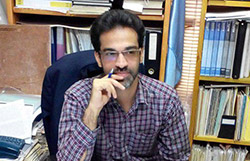Oral history of photos and photography needed
Jafar Golshan Roughani (PhD)
Translated by M. B. Khoshnevisan
2019-01-22
Since the early years of the rule of Nssereddin Shah, the King of Qajar (1895-1945) till today, many Iranian photographers have taken numerous photos each of which puts on display the lifestyle of the Iranians and what have happened to them.
The displaying of goodness and wickedness, sadness and happiness, ugliness and beauty, women and men, children and elderly people, national characters and government officials, villagers and townspeople, the rich and the poor, tradesmen and business owners, the displaced persons, beggars and delinquents, wars and clashes, peace and reconciliation, screams and protests, and hundreds of other issues have been taken in the frame of photographers and millions of photos have been produced.
Now, after the passing of those years, we look at the photos, and after a proper pause on each photo, we feel that we wish to know more about their subject and content. We wish that its photographer was alive and available so that we could ask him or her more about how such a photo was created and emerged, and receive extensive and accurate answers.

He or she talked about how he or she has lived and started the photography career? How has he or she taken photos? How and when has he or she learnt the knowledge and techniques of photography? How has he or she attended in the photography scenes in view of the considered subjects? What has been in his or her mind while taking a photo? What was he or she thinking about? How has he or she interpreted and analyzed the time of the occurrence of the incidents and events that according to it, he or she has decided to take photos. How have the interests of his or her photography been emerged and why has he or she taken photos from such a subject?
Has he or she thought about the result of taking photos for this scene or other ones; what do others think about him or her and what do and will say about his or her photos? Has he or she photographed by understanding the conditions of the time and such thinking, or has done this merely for recording a moment of the history according to his or her will, mentality and interests and has not been important the next judgements for him or her? Has he or she thought about publishing them in written and visual media such as the publications and sites, TV and the internet, bulletins and brochures and so on?
Has he or she thought about the point that he or she has frozen a moment of history and made it enduring and eternal through photographing? Has he or she thought about such issues basically? Has he or she known that like some historians and owners of memories and daily notes, he or she has recorded hundreds of words and images for Iranian contemporary history through every single of his or her photo, and adds it to the treasure of written and visual historical data of Iranian human in the contemporary world? Has he or she known that his or her photos can narrate part of the Iranian lifestyle at that time?
All of these are the questions that every viewer can regret them by looking at the photos; we wish it was his or her photo and asked such unanswered questions and tens of other questions that we had in mind. On this basis, it is desirable that the present and alive photographers who have photographed various manifestations of the Iranian life in different times and places are interviewed knowingly in order to acquire the oral history of their life and activities and in other activity, demands them useful answers about every single of the photos they have taken.
Number of Visits: 4893
http://oral-history.ir/?page=post&id=8323
